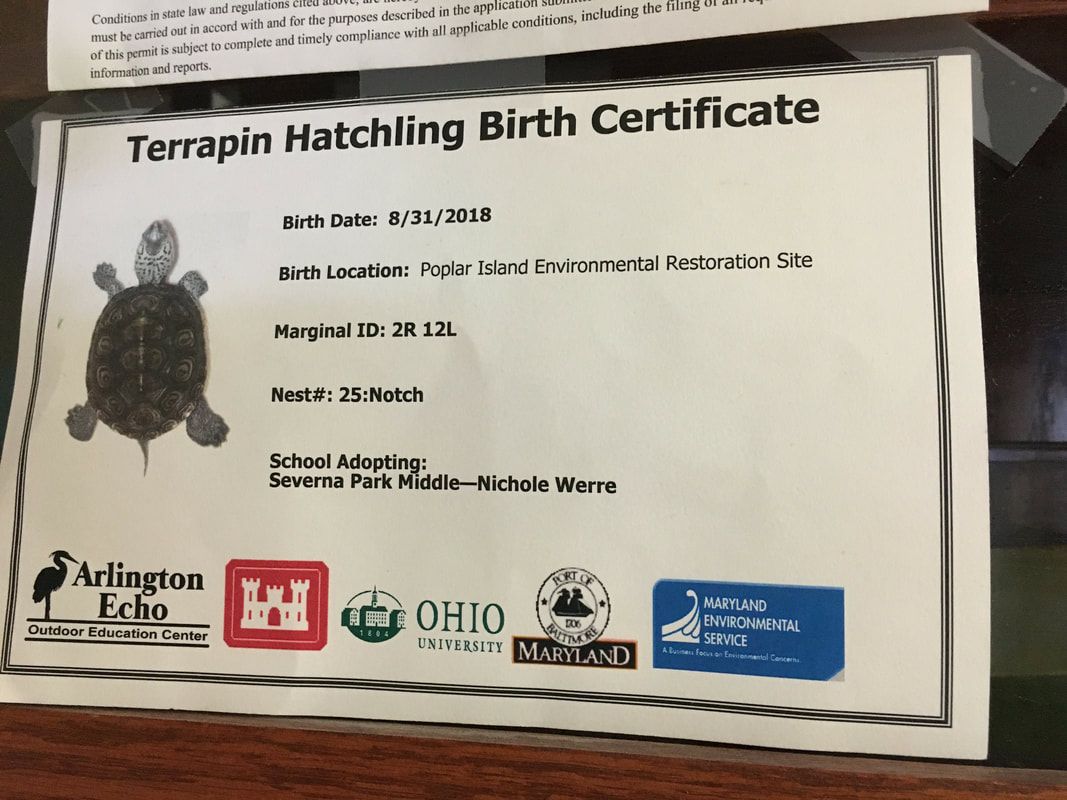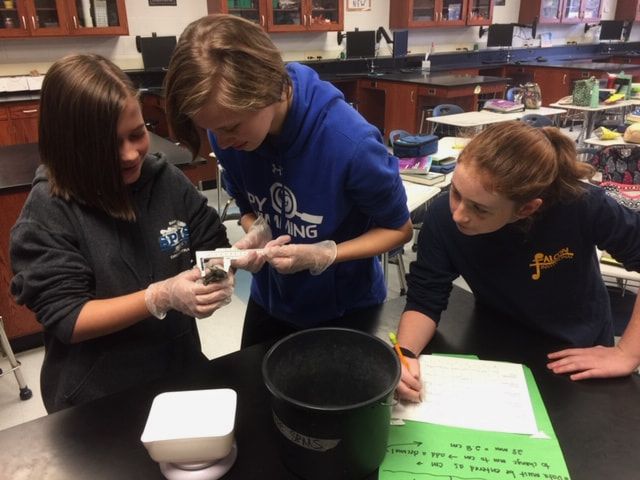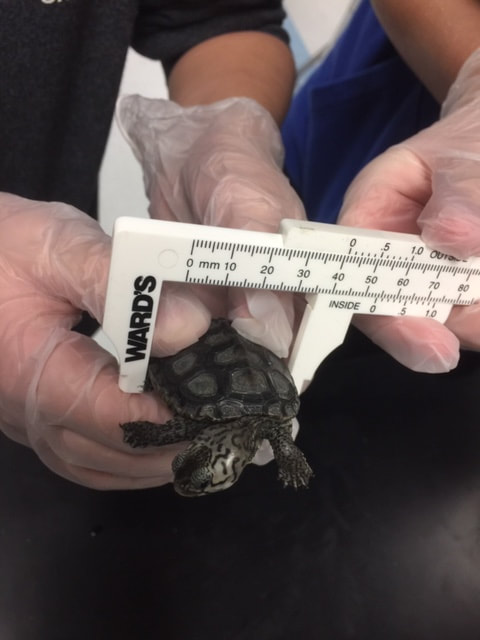Systemic Sustainability: 1.1 Curriculum and Instruction
8th Grade Project: Terrapin Connections

Meet "Lil Bay" the Terrapin
The Terrapin Connection, offered through Arlington Echo, affords SPMS students with a unique and highly engaging educational experience. While the curriculum calls for lessons to address pollution, overpopulation, human activity, environmental change and weathering, these concepts are delivered as they apply to the terrapins who make their home in the Chesapeake Bay. The impact of these ideas are evident, as students observe and care for terrapins right in their classroom. They monitor their growth, with the intent to release them to help improve the terrapin population within the Bay. While caring for these vulnerable creatures, the students are simultaneously learning about the state of the environment and what this means – the impact of their very own actions as a residents of this area – to the future survival of this unusual classroom inhabitant. Again, the idea of SPMS students becoming stewards of the Bay is very much reinforced.
8th grade teacher, Nicole Werre, has been involved with Chesapeake Connections and the terrapin program for several years, following extensive training. As such, all of the students in her classes have the benefit of learning about the head-start program. The students vote for turtle names, keep a watchful eye on the health of them, observe and chart their growth. The students are an important part of the larger research program which is striving to determine if "head-starting" the terrapins gives them a survival advantage in the wild.
Beyond class time, students are invited to stay after school to help collect specific data, such as terrapin weight, shell and plastron measurements. They also help to feed the turtles and care for the tank. Some students then travel with their teacher each year to release the terrapins on Poplar Island, a man-made island created out of dredge material from the inner harbor. This location provides a natural habitat for the terrapins without the threat of many predators. After many years of research, the data seems to be indicating that this program is indeed creating the survival advantage as scientists had hoped. And the terrapin connection experience is a tremendous real-world learning experience for SPMS students; a win-win for certain!
The Terrapin Connection, offered through Arlington Echo, affords SPMS students with a unique and highly engaging educational experience. While the curriculum calls for lessons to address pollution, overpopulation, human activity, environmental change and weathering, these concepts are delivered as they apply to the terrapins who make their home in the Chesapeake Bay. The impact of these ideas are evident, as students observe and care for terrapins right in their classroom. They monitor their growth, with the intent to release them to help improve the terrapin population within the Bay. While caring for these vulnerable creatures, the students are simultaneously learning about the state of the environment and what this means – the impact of their very own actions as a residents of this area – to the future survival of this unusual classroom inhabitant. Again, the idea of SPMS students becoming stewards of the Bay is very much reinforced.
8th grade teacher, Nicole Werre, has been involved with Chesapeake Connections and the terrapin program for several years, following extensive training. As such, all of the students in her classes have the benefit of learning about the head-start program. The students vote for turtle names, keep a watchful eye on the health of them, observe and chart their growth. The students are an important part of the larger research program which is striving to determine if "head-starting" the terrapins gives them a survival advantage in the wild.
Beyond class time, students are invited to stay after school to help collect specific data, such as terrapin weight, shell and plastron measurements. They also help to feed the turtles and care for the tank. Some students then travel with their teacher each year to release the terrapins on Poplar Island, a man-made island created out of dredge material from the inner harbor. This location provides a natural habitat for the terrapins without the threat of many predators. After many years of research, the data seems to be indicating that this program is indeed creating the survival advantage as scientists had hoped. And the terrapin connection experience is a tremendous real-world learning experience for SPMS students; a win-win for certain!



